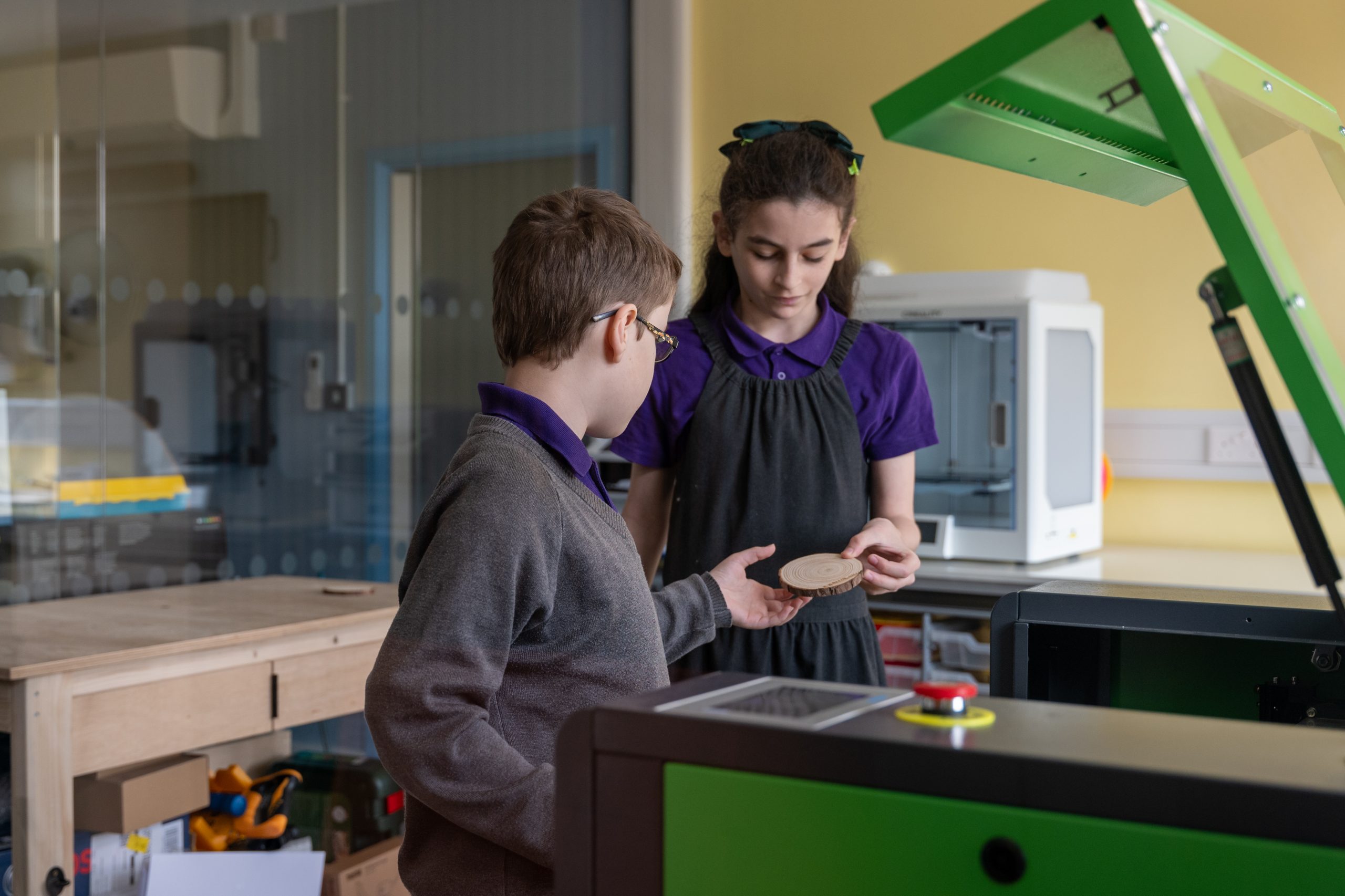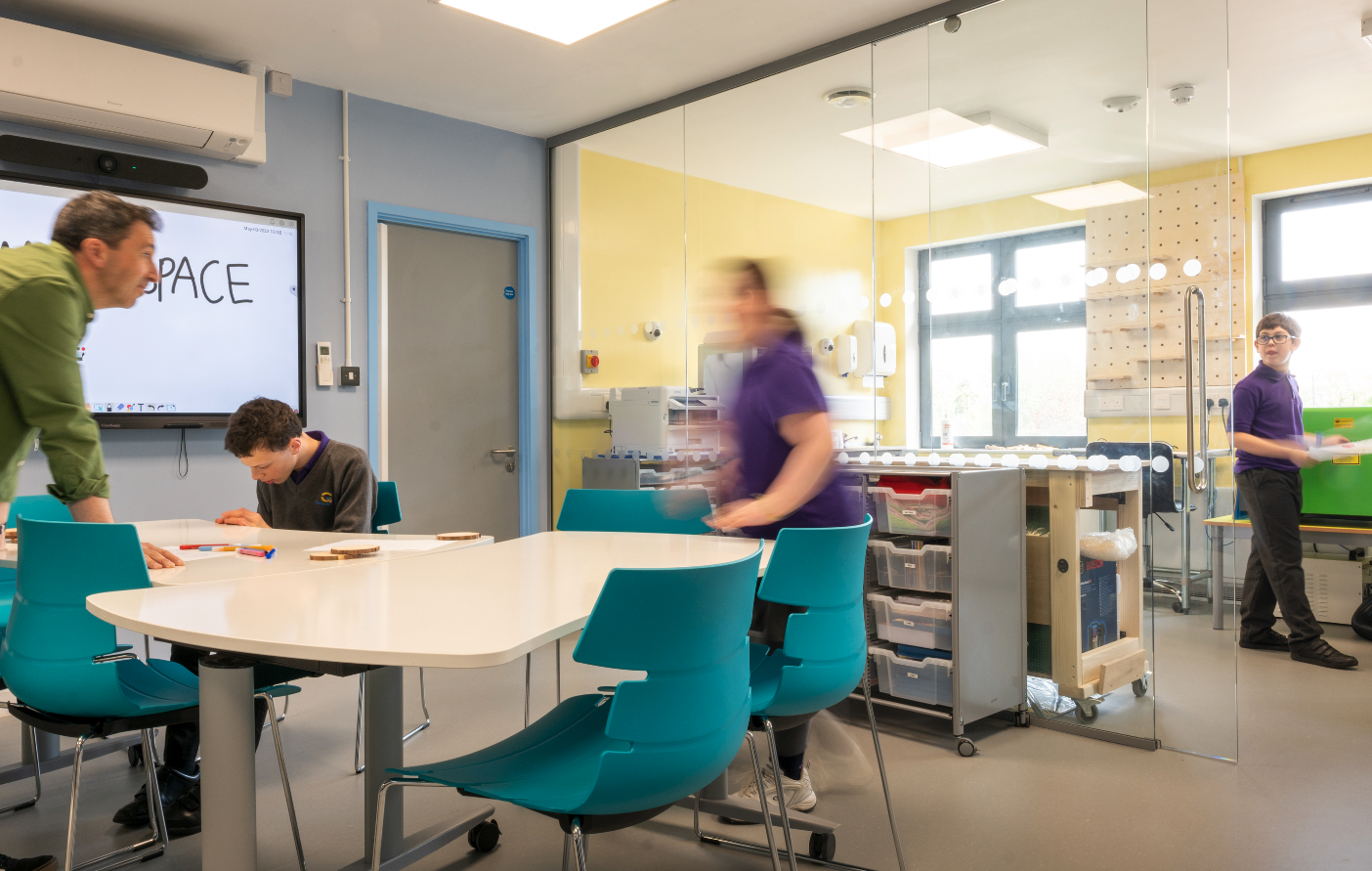Why Gesher is Now an All-Through School
Sarah Sultman and Sam Dexter
In early 2018, when Gesher was a newly opened primary school, we were focused on primary education and growing the pupil population at the school. Having recently opened in 2017 with just seven pupils, whose parents bravely took a leap of faith in sending their children to a brand new, untried and untested school with no track record, we had not thought about what might happen to our students when they reached 11 and would need to leave to find appropriate secondary schools.
In a meeting with a donor, he suggested that we consider becoming “an all-through school”, a term we weren’t familiar with. It felt like too big a leap, too big a dream to entertain; we were too busy navigating Ofsted and determining our primary curriculum to even imagine that this might be a consideration. But the seed was planted nonetheless.
In the early stages of the creation of Gesher, we had been inspired by the advice and counsel of James Wetz, author of Urban Village Schools (see The Bridge 1). His research was strongly influenced by the small-school movement in the US which provides a fertile environment for authentic peer-to-peer and student-teacher relationships, safety, learner-centred empowerment, and community involvement.
It was not, though, until early 2020, during Covid, that the plans for Gesher to become an all-through school really developed with speed. By then we were fast approaching 40 pupils and were growing out of our space on the temporary site that we were renting. We became increasingly mindful that our oldest learners were approaching year six and that we would have to signpost them to their next school. Yet, the choices were few and the demand for good secondary provision for pupils with special educational needs and disabilities (SEND) far exceeded the supply in our area and in our community. Our learners were thriving with us, too. And so, the next stage of the Gesher story began in earnest.
All-through schools are not a new idea. There are many of them, particularly in the private and SEND sectors. Private schools often have primary, middle, and upper schools that share a campus, or a private secondary will have affiliated and well-known feeder schools. What this provides, for pupils and their families, crucially is continuity; providing stability and creating a community with long-lasting relationships. The independent SEND sector mirrors this. Over the years we have visited over 50 schools around the country to learn from others, to seek out best practice, to establish which models work and why, and to harness what we have gleaned so that we can implement and incorporate those things that work uniquely well at Gesher.
There is little research on the comparisons between all-through schools versus the standard model of a separate primary, secondary, and sixth form. It is interesting, though, that the private and independent SEND education sector has developed this model as a way to recognise the value of growing and developing their students all the way through. The state sector, conversely, has been driven instead to create huge economies of scale in large secondary schools. The overriding impression we gained from all our visits was that, for children with SEND, all-through schools provide a long-term stable environment where the pupils are well known to all the staff – and where they understand and respect each other, too. Peer relationships are celebrated at Gesher and benefit all of the pupils. Our older students mentor the younger ones; they become role models, giving them a sense of responsibility. As one parent said:
“It’s great for my child to be around older kids who are also neurodiverse. It creates a real community.”
When we sought to expand the school, the views and perspectives of the parents were important to us. We know that transitions are a particularly challenging time for autistic young people and for their parents. In addition, we were aware that for our young people, new environments and their spiky profiles mean that it takes time for staff to know and understand their needs. As two parents at Gesher articulated so well:
“Especially for neurodivergent children who prefer familiarity and routine, having primary and secondary school in the same place makes it a safe space and one they can rely on. Additionally, they won’t ‘lose’ time getting to know a new environment and people and likewise a new set of teachers and peers getting to know them.”
“(We value) knowing all the good work that has been put in during the primary years can be built on and not having to worry about the transition to secondary”.
Thus far, all the families that have attended Gesher primary have chosen to remain at the school, where they feel supported and understood, into the secondary phase. Another parent, whose child is now in the secondary phase at Gesher, felt the continuation of the same curriculum ideas was really important for their son:
“Now Gesher’s an all-through school it is wonderful, especially with the new Life Skills provision that the school now offers. It means that our son will be able to continue to thrive and be happy in an environment that can support his needs.”
Gesher is a learning community, one which puts relationships at the heart of its organisation and design. Attachments and relationships are key to our pupils being stable and happy learners, comfortable in their environment, with their self-esteem enhanced, and confident in their sense of place and space. For our parents, too, it provides security and stability:
“One of the big reasons we chose Gesher is that it is currently a through school. We need a school that will teach kids the skills they need as they become adults, and there’s not really any school like that, especially a Jewish faith one, apart from Gesher.”
__________________________________________________________________________
In designing their secondary provision, the Gesher team has cast their net wide for examples of schools that make being small in size part of their success story.
Since 1991, the New American Schools Initiative has opened 2,600 new small high schools in 45 states across the USA. Two of the most globally influential school models have arisen as a result:
-
Big Picture schools, founded by Dennis Littky and Elliot Washor (now 65+ Big Picture high schools in 18 states and more around the world). These small, personalised schools, started for drop-out learners and graduate 92% of their students on time, compared to a national average of 84%.
-
High Tech High (HTH) is a community of 16 elementary and high schools in the San Diego area creating an all-through local school system. Some 98% of HTH’s graduates have been admitted to college or university. About 35% of HTH graduates are first-generation college students and 85% of their free-school-meals students complete degrees.
With their focus on the centrality of relationships and the personalisation of learning that arises from knowing students well, young people in these schools thrive and consistently outperform teenagers in conventionally sized, conventionally structured high schools with comparable demographics.
Professional Prompt Questions
All-through schooling is not an easily available option for most schools.
However, some of the features that professionals and parents value in all-through schools – relationships, deep knowledge of learners, security, and personalisation of approaches – can be adapted for more familiar models of schooling.
The professional prompts that follow respond to the question: “How could we help different phases of schooling to incorporate some of the virtues of all-through provision?”
- Is knowledge transfer about students primarily documented or also face-to-face? How is the more subtle knowledge of children and families communicated?
- When there are concerns about a student in their first year after transfer, is the relevant feeder school teacher consulted and involved?
- Does your school have any teacher exchanges with your feeder school to build empathy and to forge relationships?
- Are feeder school staff invited to events and productions and activities involving their former learners?
- When achievements are celebrated, is the contribution of the feeder school recognised?
- On graduation from your school are feeder schools notified of results and destinations – can they share in the successes?



